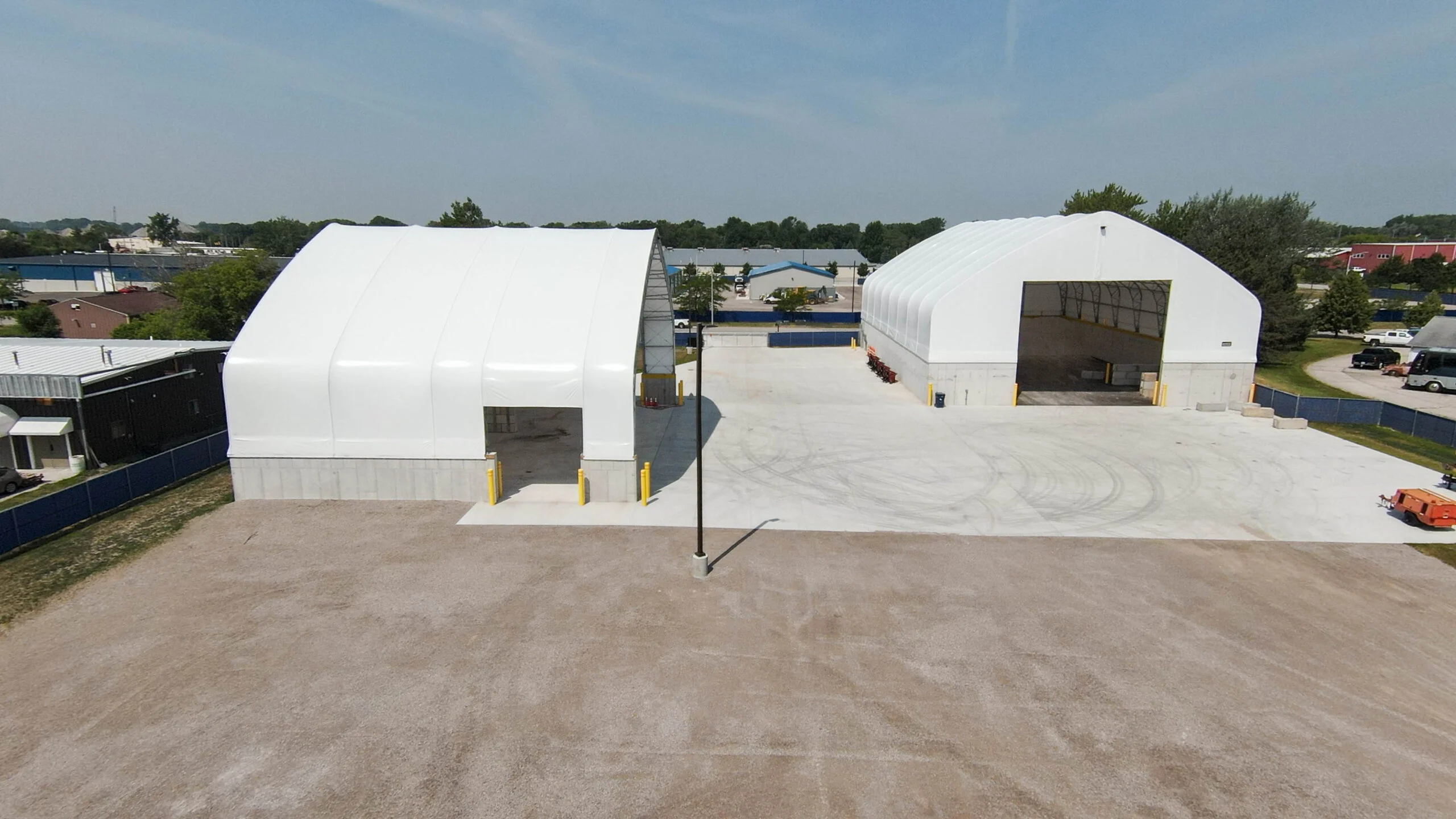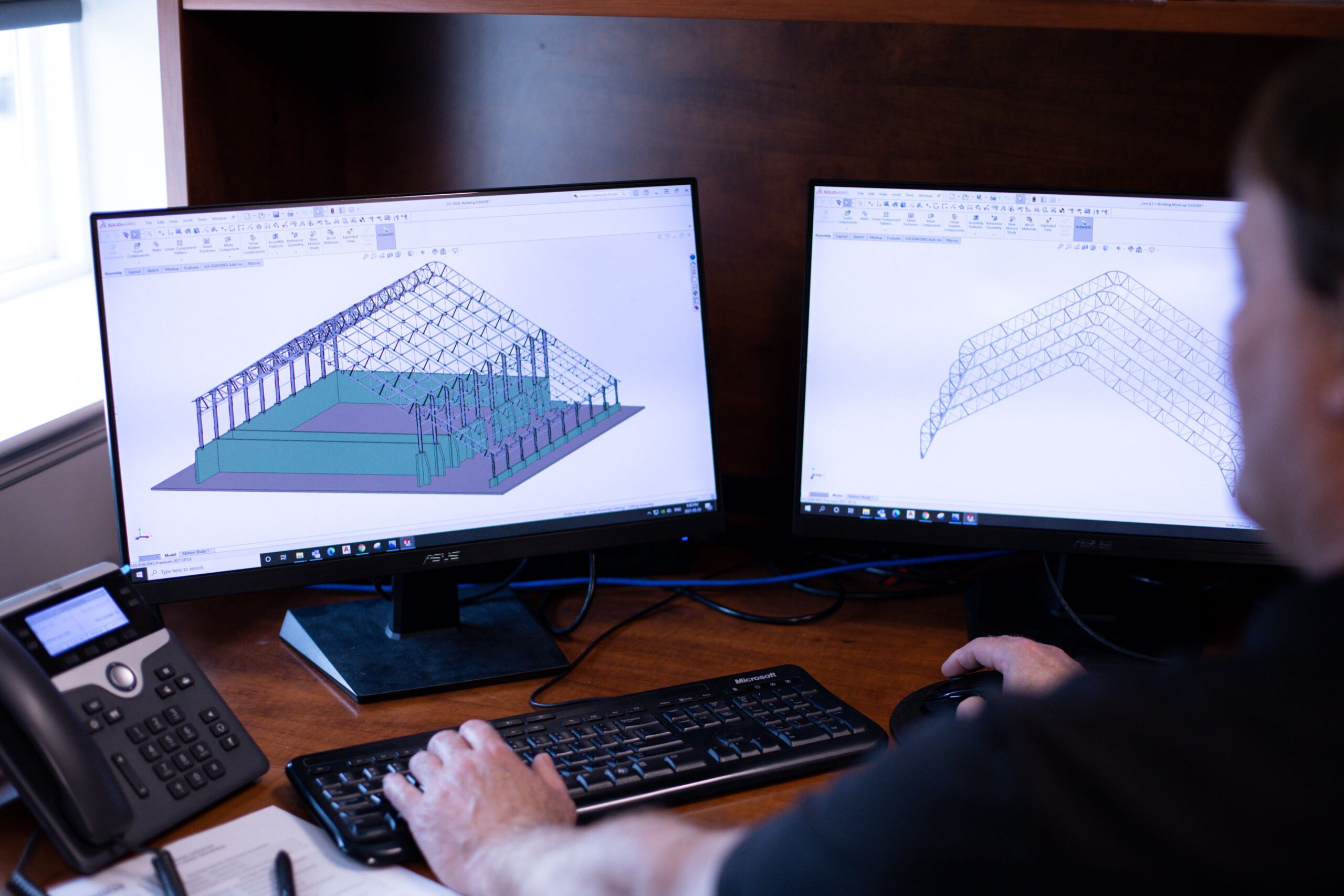Agricultural Composting Starts with Fabric Buildings
What is Composting?
Composting has always been a part of farming. But the way it’s done today, especially at scale, is shifting. With a growing focus on sustainability, odor control, and operational efficiency, more agricultural operations are investing in fabric-covered buildings for bulk composting.
At Britespan, we’ve seen firsthand how fabric buildings are transforming composting from a messier side task into a streamlined, value-adding part of the farm. Designed for performance, speed, and long-term durability, these structures are built to support composting systems of all sizes and types.

What Is Agricultural Composting? (And Why It Still Matters)
At its core, agricultural composting is the controlled breakdown of organic waste like livestock manure, used bedding, and plant materials. The process creates a stable, nutrient-rich fertilizer that farmers can use themselves or sell.
But while composting sounds simple, managing it efficiently is anything but. Uncovered piles are vulnerable to weather, nutrient loss, and runoff. Land use can be tricky. And long processing times can delay productivity.
That’s where fabric composting buildings come in. They’re designed to solve these exact problems.
Fabric Buildings Designed for Composting Success
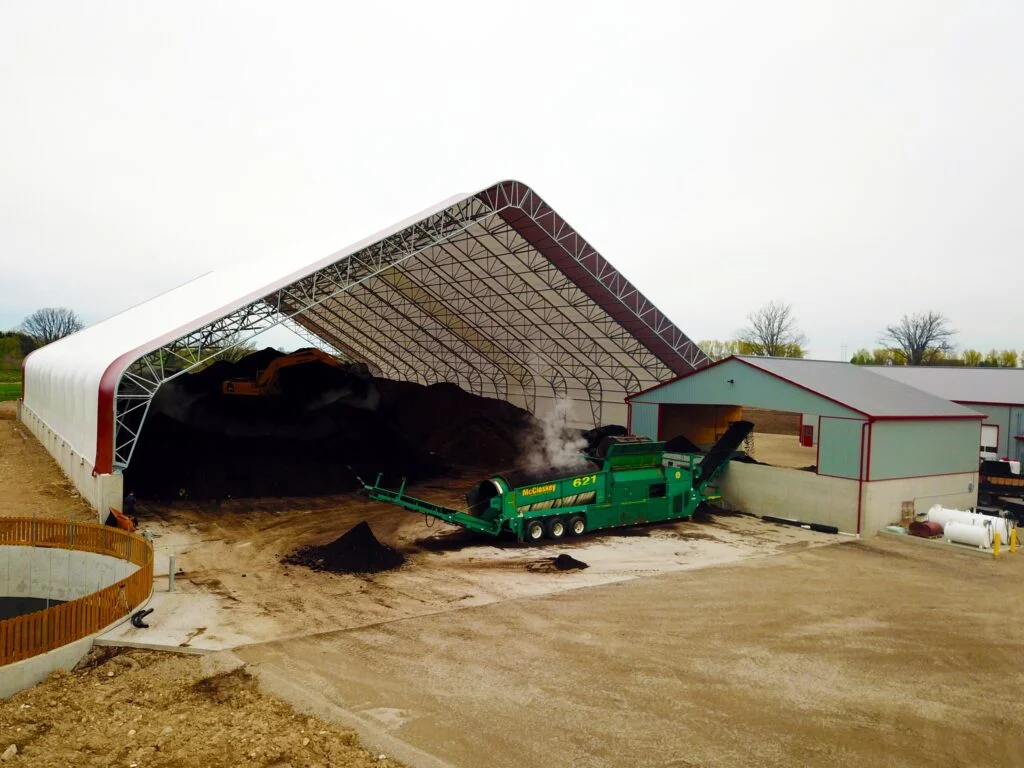
Elmview 150×234 Genesis and 67×200 Composting Facility
A Controlled Environment That Supports Faster Processing
Composting materials are sensitive to moisture and temperature. When wind, snow, and sun are left unchecked, it can slow or even reverse the breakdown process. That’s why shelter matters. A fully enclosed composting building provides a dry, stable environment that supports microbial activity and shortens the overall composting cycle.
For example, in Ontario, a 150′ x 234′ Epic Series building is used by Wallenstein Farms to house compost piles year-round. The controlled climate and consistent airflow have helped improve batch turnover and overall operations.
Column-Free Interiors for Equipment and Material Flow
Britespan buildings are engineered with clearspan interiors, giving you an open floor plan with zero interior columns. This means compost turning machines, front-end loaders, or conveyors can move easily throughout the space without obstruction.
Whether you’re working with a static pile, turned windrows, or an aerated system, a column-free setup keeps your site functional, not frustrating.
Built to Resist Corrosion and Moisture
Composting is tough on structures. Moisture, gas release, and organic breakdowns can quickly corrode buildings not built for the job. Britespan’s steel trusses are hot-dip galvanized after fabrication for full coverage, a key advantage in composting environments where corrosion risk is high.
Another build, an 80′ x 200′ Atlas Series building is used to shelter large-scale compost piles generated by a grain and livestock farm. After multiple winters, the galvanized trusses have held up against snow, heat, and steam, with no signs of degradation.
Fast & Flexible Builds with Fabric Buildings
Traditional buildings can take months to complete. Fabric buildings, thanks to their innovative design, go up in a matter of weeks. Whether you need to expand an existing composting program or start fresh with a dedicated facility, speed matters, and Britespan delivers.
We offer permanent and temporary options, plus scalable designs that can grow as your operation grows.
Composting With Less Environmental Impact
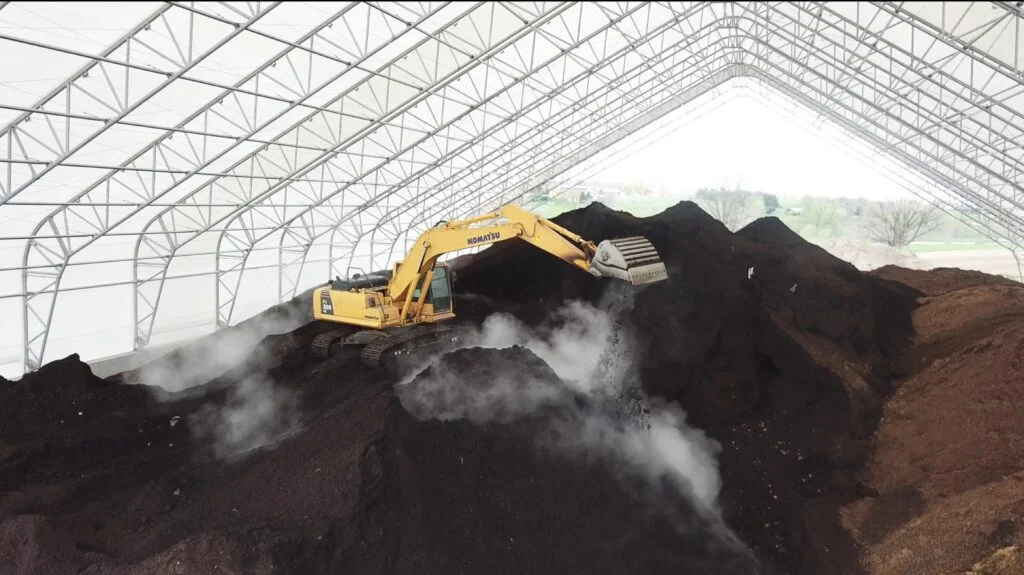
Elmview 150×234 Genesis and 67×200 Composting Facility
Managing the environmental side of composting is a growing concern for farms of all sizes. Fabric buildings help reduce that risk by containing odors, protecting against nutrient-rich runoff, and minimizing water contamination.
By housing compost in a purpose-built shelter, you’re not only improving processing time, you’re showing your community and local regulators that your operation prioritizes stewardship.
Fabric Buildings are Designed for Long-Term Use
While some composting shelters are marketed as “temporary,” Britespan buildings are built for the long haul. Our engineered structures are compliant with local building codes, insurable, and backed by up to 25-year fabric warranties. You’ll get the performance of a permanent building without the cost and rigidity.
Every Britespan building is designed, engineered, and manufactured in-house. That means faster delivery, better quality control, and full support, from planning to post-install.
The Composting Structure That Pays Off
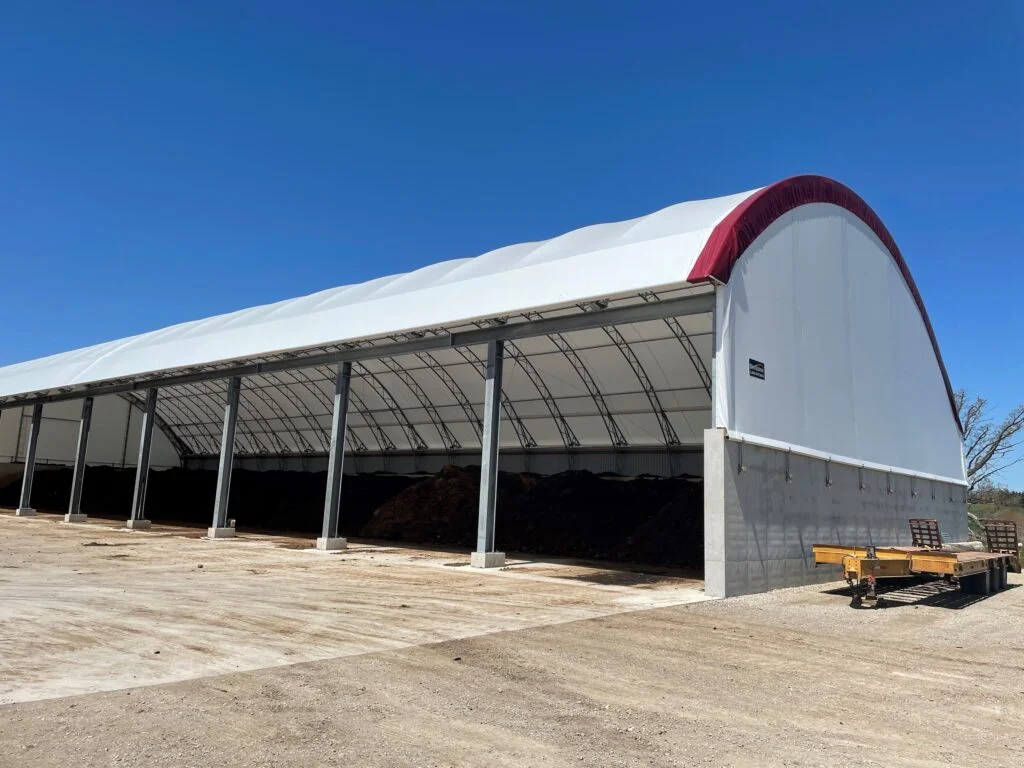
Elmview 150×234 Genesis and 67×200 Composting Facility
Smart composting doesn’t just save time. It can reduce operating costs, generate extra income, and improve long-term soil quality. By moving your compost operation into a fabric building, you’re giving it the environment it needs to thrive.
If your farm or ag business is exploring better ways to manage compost, Britespan can help. Our team will walk you through options, recommend a design that fits your site and workflow, and ensure your structure is built to perform, season after season.
Want to explore a building solution that supports your composting goals? Contact Britespan today to get started.
